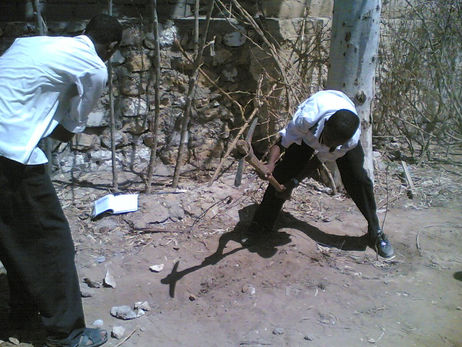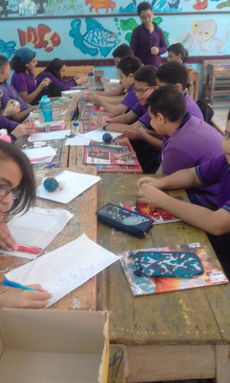Project-Based Learning vs Problem-Based Learning

Project-Based Learning
Problem-Based Learning
Project-Based Learning is a pedagogical approach inspired by John Dewey.
Problem-based learning is a teaching strategy introduced by Howard Barrows.

Project-Based Learning

"Examples of Project-Based Learning Activities":
The source is https://www.theedadvocate.org
""
Students can learn about polymers through hands-on activities using some of their favorite products, like shoes and sporting equipment. As a culminating activity, they can put a wrapper from their favorite chips or candy bar into the microwave for five seconds to learn about how polymers return to their natural state when exposed to the heat.
2-Design an app.
Students love using the newest apps and games, so take it to the next level by having them design their own! With Apple developer tools, kids can learn how to create an app or online game. They can learn about technology and problem-solving skills while engaged in what they love.
Students will learn lessons about science, social studies, math, and economics through planting their own organic farm. They can begin by researching the crops they want, figure out what kind of care is needed, and then use a budget to determine what materials they must purchase. They can even sell food from their farm to contribute to a cause or fundraiser.
Students begin by studying the engineering of bridge building, comparing the construction of famous bridges such as the Golden Gate Bridge or Tower Bridge in London. Then they work in teams to construct bridges out of Popsicle sticks. The challenge is to get their bridge to hold five pounds (for younger students) or twenty pounds (for more advanced students).
Adapt any of these projects to your class or curriculum, and watch your students become inspired."
Togdheer project
Problem-Based Learning

Problem Solving Steps
First: Defining the problem:
The teacher, with the help of the learners, identifies the problem For example, a problem that society suffers from, which is environmental pollution. The study begins with determining the nature and features of the problem.
Second: gathering information about the problem:
The teacher helps the learners to gather information about the problem by asking a group of questions. It is preferred that the learners record the information they have gathered in a special paper.
Third: Imposing hypothesis to solve the problem:
The purpose here is an expected or potential initial solution. The more the assumptions are more numerous It increased the possibility of a solution in between. It is desirable to prioritize assignments as defined by the learners. The more the hypothesis is clear and specific, the easier it is for the learner to test its validity.
Fourth: Testing the validity of the hypotheses:
This requires some activities and experiments to prove the correctness or incorrectness of some hypotheses.
Fifth: Access to Results:
If it is proven that a cause offers a solution to the problem and can be dealt with in new situations. The solution is chosen through a discussion that everyone participates.
Sixth: Application of the solution:
That the learners apply what they have achieved in new situations, whether inside or outside the classroom environment, and thus the method of problem solving becomes within their intellectual repository.
Seventh: Evaluation and Follow-up:
Follow-up and evaluation of the effectiveness and feasibility of the solution that was applied in new problems.





















